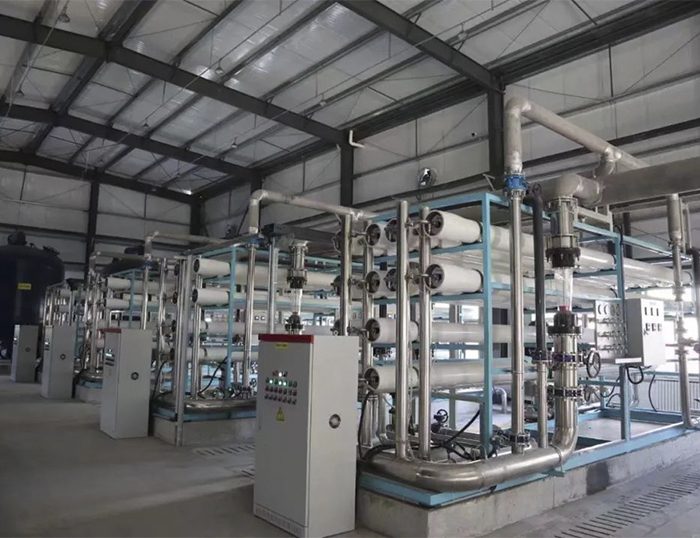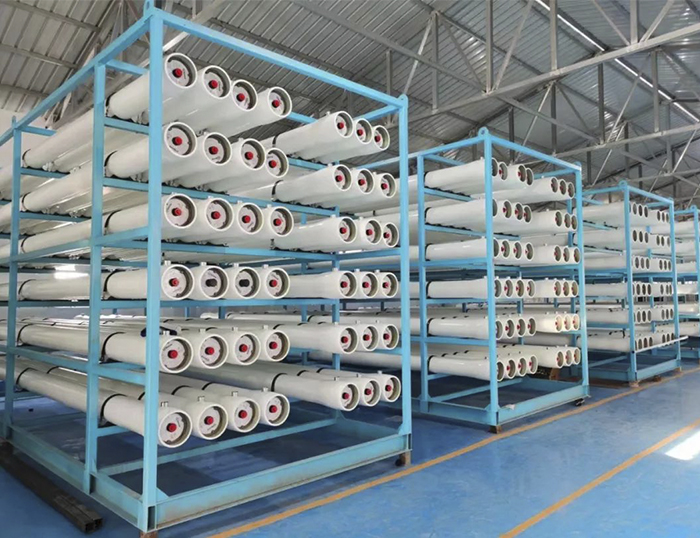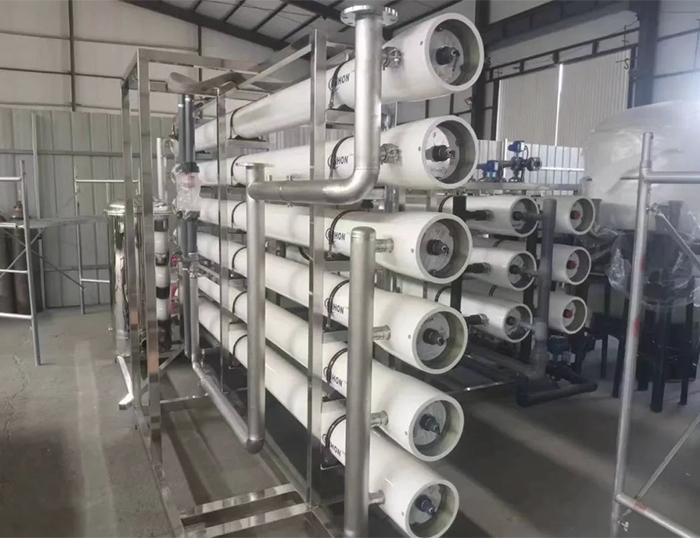What is a reverse osmosis system? Where is it used?
The reverse osmosis (RO) system is an indispensable part of modern wastewater treatment technology and is widely used in various fields, including industrial water supply solutions and civilian domestic water purification. But what is a reverse osmosis system? What is its working principle? In this article, we will delve into the basic principles, structure, applications, and key role of the reverse osmosis system in modern society.
I. Working Principle of Reverse Osmosis System
Reverse osmosis (RO) is a separation process that utilizes pressure differentials to promote water flow from a high-concentration solution (or high-pressure solution) through a semipermeable membrane into a lower-concentration solution (or low-pressure solution). During this process, water can pass through the semipermeable membrane easily, while most carbonates, organic compounds, and bacteria etc. and other impurities dissolved in water are intercepted to achieve water purification.

II. Structural Design of Reverse Osmosis Equipment
Reverse osmosis equipment is mainly composed of pretreatment system, high pressure pump, reverse osmosis membrane components, control system and post-processing system.
1.The pretreatment system's main function is to provide comprehensive solutions for the source water, removing suspended particles, colloidal solutions, and organic compounds, etc., to ensure that the reverse osmosis membrane components are not polluted and damaged by the environment. Common pretreatment methods include activated carbon filters, quartz sand filters, and water softening equipment, etc.
2. The high-pressure pump is an indispensable part of the reverse osmosis system, which is responsible for increasing the pretreated water to a specific working pressure to facilitate water permeation through the RO reverse osmosis membrane. The performance of the high-pressure pump has a direct impact on the water production capacity and salt rejection efficiency of the reverse osmosis system.
3. The core component of the reverse osmosis system is the reverse osmosis module, which is composed of several reverse osmosis membrane elements. The reverse osmosis membrane is a special semipermeable membrane that allows water to permeate under high pressure while blocking impurities in water at the same time.
4. Automation system: The automation system is responsible for monitoring and adjusting the operating state of the reverse osmosis system to ensure the safety and efficient operation of the equipment. This mode usually includes a PLC (programmable logic controller), a touch screen, sensors, and components.
5. Post-treatment system: The post-treatment system further processes the RO water to meet different water quality standards. Common post-treatment process technologies include ultraviolet disinfection, ozone disinfection, and activated carbon filtration, etc.

III. Application fields of reverse osmosis system
1. Industrial water treatment: Reverse osmosis systems have been widely used in the industrial field, including power engineering, electronics, chemical factories, and pharmaceutical industries. These industries have strict demands for water, requiring the removal of various impurities and cations in water to ensure the stability of the production process and product quality.
2. Domestic water purification: As people's living standards have improved, people's requirements for drinking water have increased. Reverse osmosis systems can quickly eliminate impurities, viruses, and heavy metals and other harmful gases in water, thereby improving the safety of drinking water. Currently, many families have installed household reverse osmosis water purifiers to ensure the health and safety of drinking water.
3. Seawater desalination is one of the key ways to address the world's water pollution. Membrane separation technology is one of the main technologies in seawater desalination, with the advantages of high efficiency, energy saving, and environmental protection. With the help of reverse osmosis systems, seawater can be transformed into water that can be used by people.
4. Wastewater treatment: Membrane separation technology has been widely applied in wastewater treatment. Using reverse osmosis systems, comprehensive solutions can be provided for chemical wastewater and domestic sewage treatment, removing harmful substances from water to achieve the utilization of wastewater resources and environmental protection.

IV. The Role of Reverse Osmosis Systems in Modern Society Development.
Reverse osmosis systems are the main means of contemporary wastewater treatment technology, playing a leading role in ensuring water security and promoting sustainable development. Using these devices, we can effectively utilize and purify water sources to create a healthier, safer, and more comfortable living environment for people. At the same time, the development of membrane separation technology has driven the development of related industries and promoted the prosperity and progress of social and economic development.
In summary, reverse osmosis systems are an efficient, energy-saving, and environmentally friendly wastewater treatment technology that is becoming increasingly important in modern society. In the future, as technology continues to develop and innovate, membrane separation technology will become more mature, creating a better living environment for people.